Imagine the disappointment of seeing beautiful, complex crochet projects online but feeling incapable of making them yourself. The gap between your current abilities and your aspirations can seem insurmountable, leaving you wondering if you’ll ever progress beyond simple scarves and granny squares.
Are you feeling stuck in your crochet journey, unable to create the intricate designs you dream of? Many crocheters hit a plateau, finding themselves repeating the same basic patterns and struggling to advance their crochet techniques and skills. This can lead to frustration and a loss of passion for the craft you once loved.
But there’s hope! This guide will help you with advanced crochet Techniques and Skill Enhancement” is here to help. This guide will walk you through advanced stitches, complex patterns, and innovative techniques to elevate your crochet game. Whether you’re looking to create stunning garments, intricate doilies, or lifelike amigurumi, this resource will provide you with the knowledge and confidence to tackle any project. Get ready to unlock your full crochet potential and create pieces that will amaze both you and others!
If you’re new to crochet or need a solid foundation, consider checking out The Ultimate Guide to Starting Your Crochet Journey: From Novice to Confident Crafter, which will help you build a strong crochet base before diving into more advanced techniques.
Table of Contents
Understanding levels of Crochet techniques and Skills
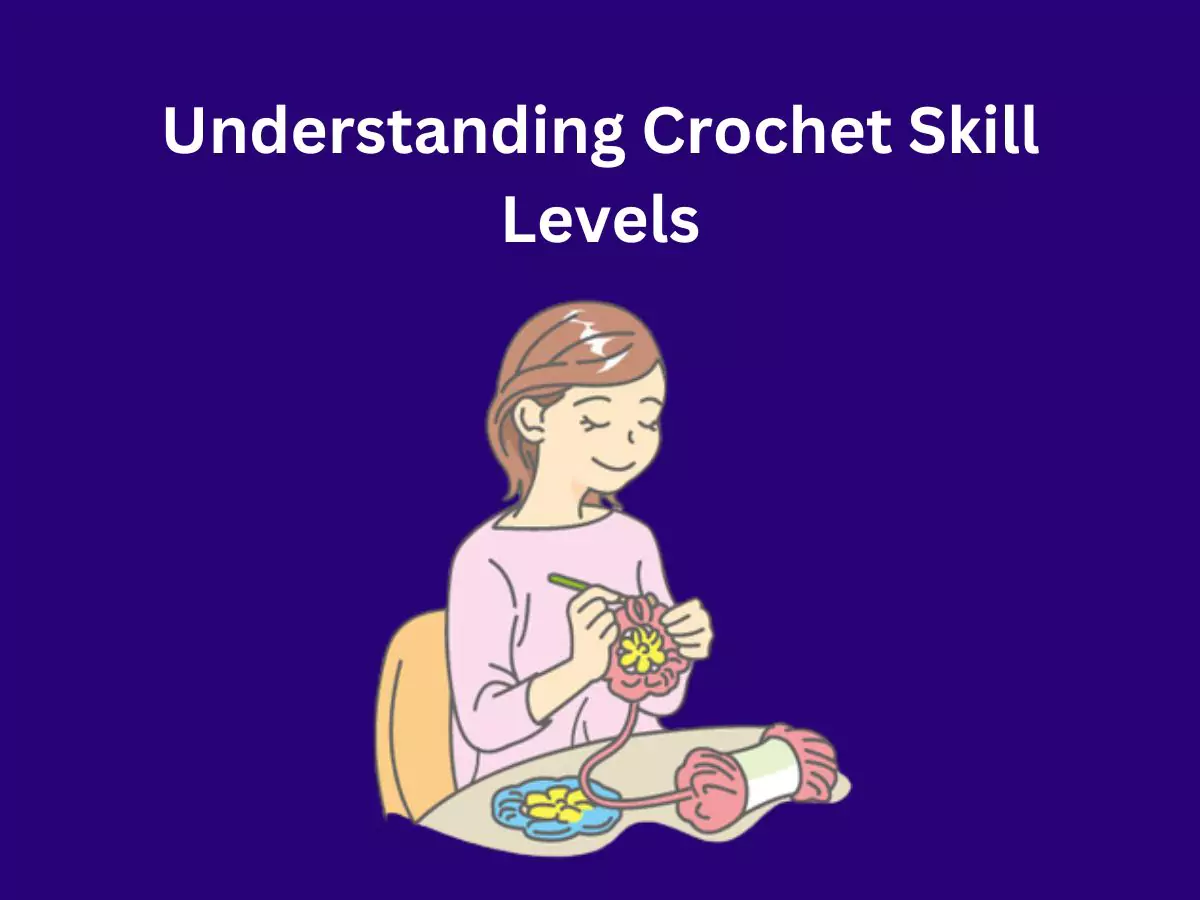
Crochet techniques and skills can reflect how much knowledge you’ve gained and how well you can apply it to your projects. There are four universal skill levels: Beginner, Easy, Intermediate, and Experienced. These levels are based on the stitches and techniques used in a project, helping you know what skills you’ll need to complete it.
Beginners start with basic stitches like chain, slip, and single crochet, usually working with one color on simple projects like scarves or dishcloths. As you progress to the Easy level, you’ll learn double, half double, and triple crochet stitches, and start working with two colors on projects like hats and blankets.
Intermediate crocheters can handle more complex stitch variations and techniques. They work on projects like triangle shawls and simple amigurumi, using multiple colors and creating 3D elements. At the Experienced level, you’ll tackle intricate stitch patterns, non-repeating designs, and multi-colored techniques like tapestry and fair isle.
Essential Advanced Stitches to Learn
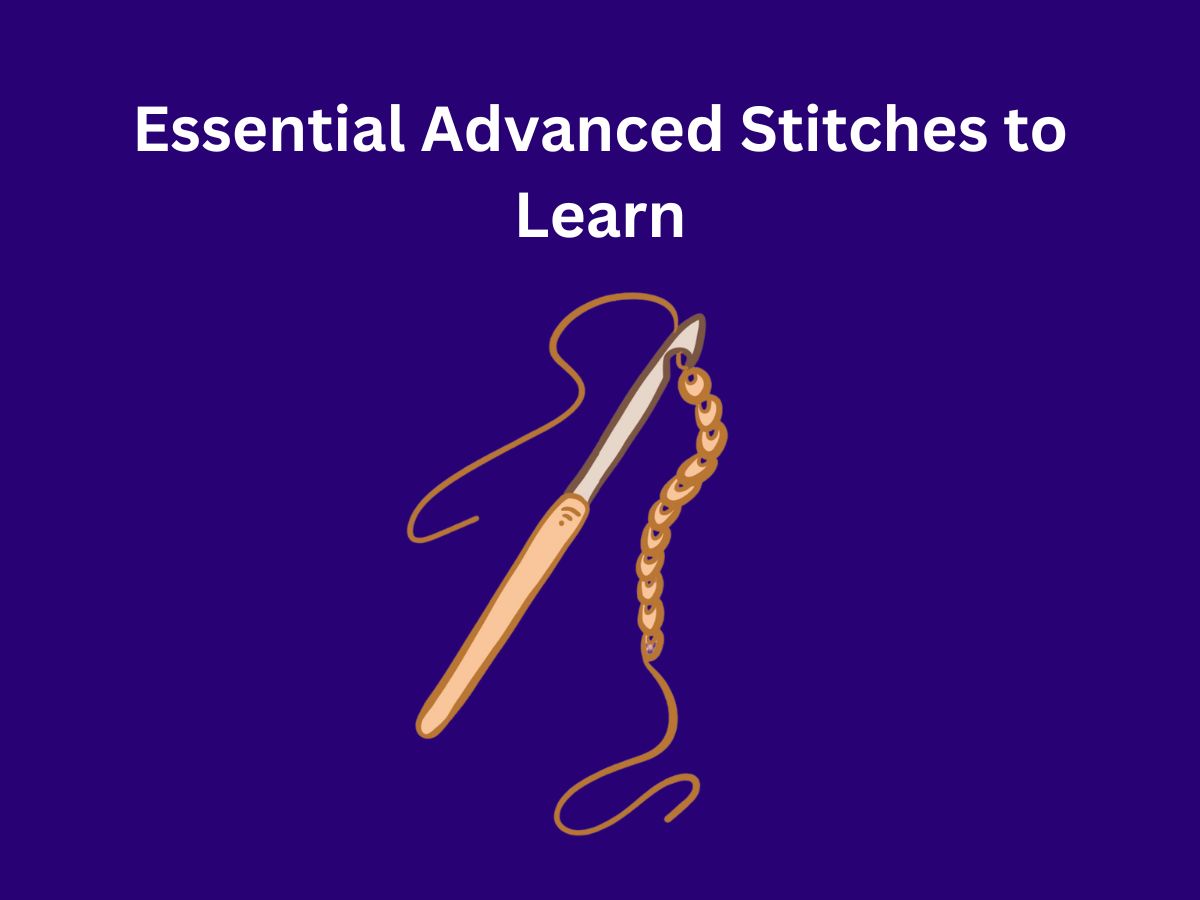
As you progress in your crochet journey, developing certain crochet techniques and skills will allow you to take your projects to the next level. Some essential advanced stitches include the granite stitch (also known as moss stitch), bobble stitch, popcorn stitch, shell stitch, and alpine stitch. These stitches add texture and visual interest to your work.
Other important advanced stitches to master are the linen stitch, herringbone stitch, ripple stitch, tulip stitch, and chevron stitch. These stitches create unique patterns and can be used in a variety of projects. The sedge stitch, mesh stitch, crochet rib stitch, puff stitch, and cluster stitch are also valuable additions to your advanced crochet repertoire.
Expanding your crochet techniques and skills through these stitches opens up new possibilities for your crochet projects. You can create intricate lace patterns, add dimension with textured stitches, or experiment with colorwork techniques. Remember, practice is key when learning these advanced stitches. Start by incorporating them into small projects or as edgings on simpler pieces to build your confidence.
Tackling Complex Patterns and Projects

As you advance in your crochet skills, you’ll gradually be understanding complex crochet patterns and projects. These might include intricate lace work, detailed garments, or large-scale projects that require advanced shaping techniques. At this level, you’ll be working with patterns that have complex stitch variations and techniques.
One way to tackle complex projects is to break them down into smaller, manageable parts. Start by thoroughly reading the pattern and understanding each section before you begin. It’s also helpful to practice new techniques or stitch combinations separately before incorporating them into your main project. Don’t be afraid to use stitch markers to keep track of pattern repeats or complex sections.
Advanced projects often involve working with multiple colors or using specialized techniques like Tunisian crochet. You might find yourself creating intricate lace tablecloths or complex Tunisian crochet blankets. Remember, it’s okay to challenge yourself, but also be patient with your progress. Each complex project you complete will further enhance your skills and open up even more possibilities for your crochet journey.
Mastering Color Work and Texture Techniques
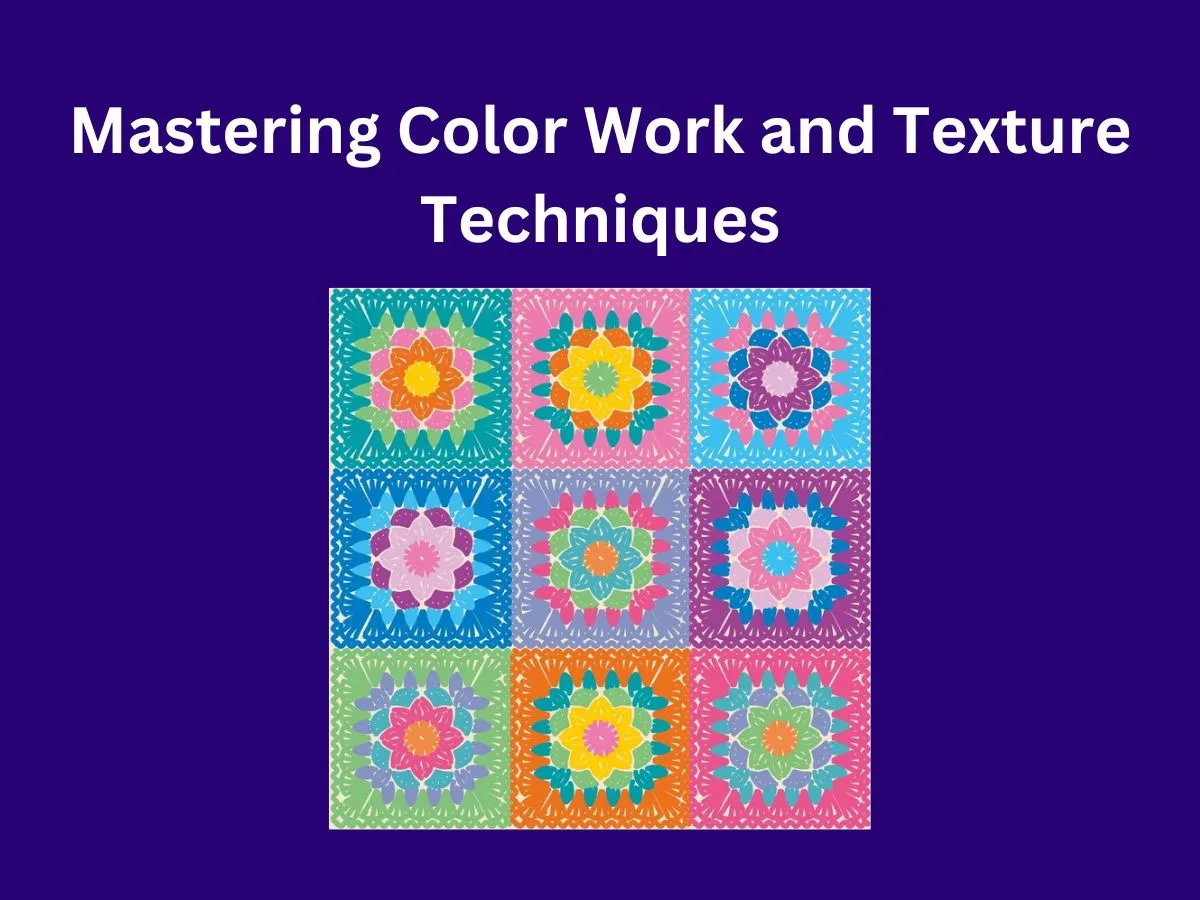
Color work and texture techniques can take your crochet projects to the next level. There are several methods to add color and texture to your work, including mosaic crochet, stranded and Fair Isle crochet, tapestry crochet, and intarsia. Each technique creates unique patterns and effects, allowing you to make stunning designs.
Mosaic crochet is one of the easiest color work techniques to learn. It uses only chains, single crochets, and double crochets, with just one color per row. You create patterns by working double crochets into stitches two rows below. This method is great for projects that show both sides, as it creates a striped back.
Other color work techniques like stranded, Fair Isle, tapestry, and intarsia crochet involve working with multiple colors in a single row. These methods require more yarn management but offer endless possibilities for creating intricate designs. To master these techniques, practice is key. Start with simple patterns and gradually work your way up to more complex designs as you become more comfortable handling multiple colors.
Exploring Specialty Crochet Styles
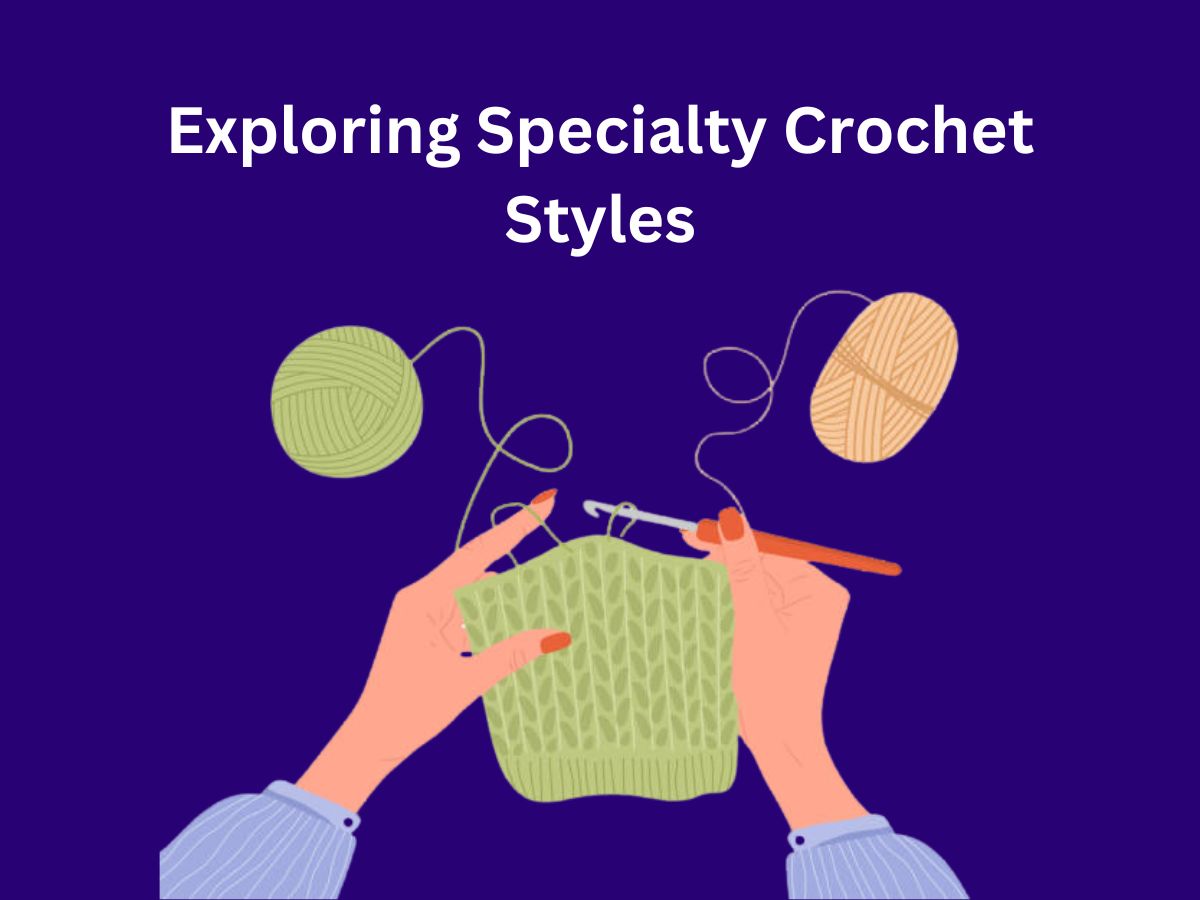
Specialty crochet styles allow you to create unique and eye-catching projects. One popular style is crochet braids, which combines traditional braiding techniques with crochet to create various hairstyles. These can range from curly crochet braids to faux locs, passion twists, and even crochet pixie cuts.
Another specialty style is amigurumi, the Japanese art of crocheting small, stuffed toys. This technique often uses tight stitches and works in continuous rounds to create cute, 3D figures. Tunisian crochet is another specialty style that uses a long hook to create a fabric that looks similar to knitting.
Exploring these specialty styles can help you expand your crochet skills and create a wider variety of projects. Each style has its own techniques and challenges, but mastering them can lead to unique and impressive creations. Don’t be afraid to try new styles and experiment with different techniques to find what you enjoy most.
Tips for Improving Stitch Consistency and Tension
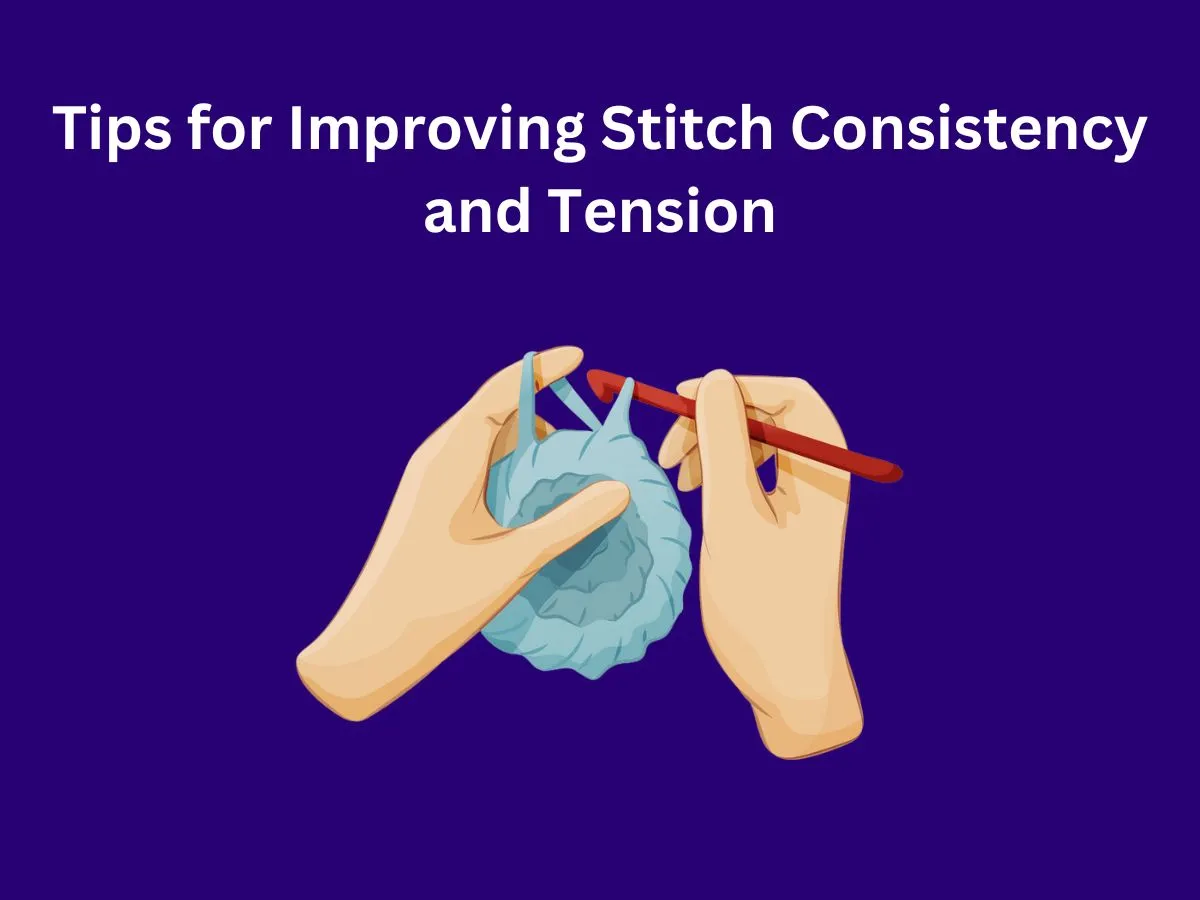
Consistent tension is crucial for creating polished crochet projects with even stitches and perfect dimensions. To improve your tension, focus on developing muscle memory through regular practice. Start with simple patterns like granny squares or scarves to establish steady hand movements.
Experiment with different ways of holding your yarn and hook to find what feels most comfortable and gives you the best control. You might try wrapping the yarn around different fingers or using tension rings to regulate yarn flow. Also, consider trying different hook sizes or yarn weights to see what works best with your natural grip.
Remember to maintain a relaxed grip on both your hook and yarn. Holding them too tightly can lead to stiff, uneven stitches and hand fatigue. Practice crocheting in short, focused sessions to avoid fatigue that can disrupt your tension. With time and practice, you’ll develop a consistent tension that will greatly improve the quality of your crochet work.
Advanced Shaping and Construction Methods
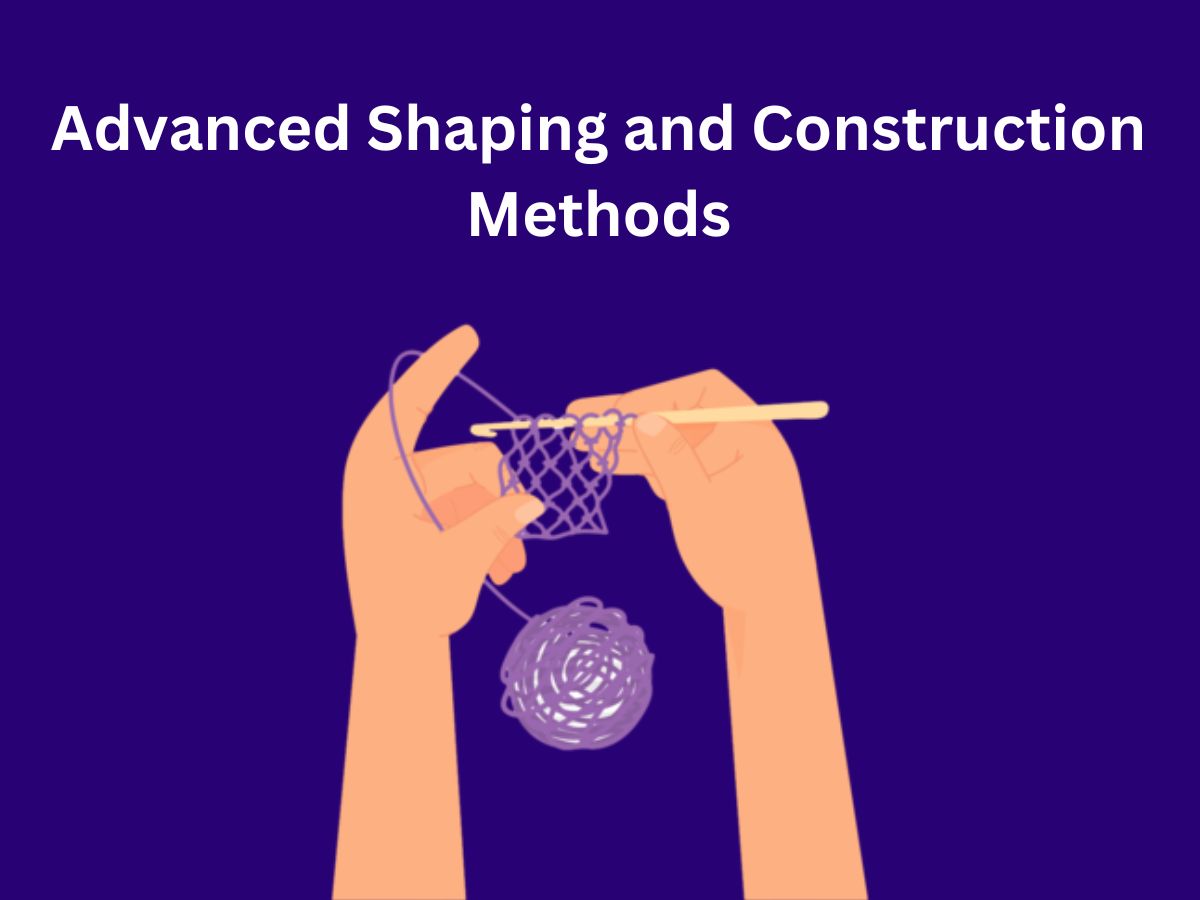
Advanced shaping in crochet allows you to create more complex and interesting projects. One key technique is using increases and decreases strategically. By placing these stitches closer together, you can create more dramatic shapes, while spreading them out results in gentler curves. This is useful for making things like chevrons or ripple patterns in afghans.
Another method involves using stitches of different heights within the same project. This technique is similar to short rows in knitting and can create a cupped effect. It’s particularly helpful when you need to adjust patterns to fit different body shapes or create unique design elements. For example, you might use taller stitches in the middle of a row and shorter ones on the edges to create a rounded shape.
When working on more complex shapes, like in amigurumi projects, it’s helpful to plan your increases and decreases carefully. Using a grid or graph paper can help you visualize how your stitches will create the desired shape4. Remember that shaping often happens on the top and bottom of a piece, not the sides. By understanding these principles, you can create more intricate and customized crochet projects.
Incorporating Embellishments and Decorative Elements
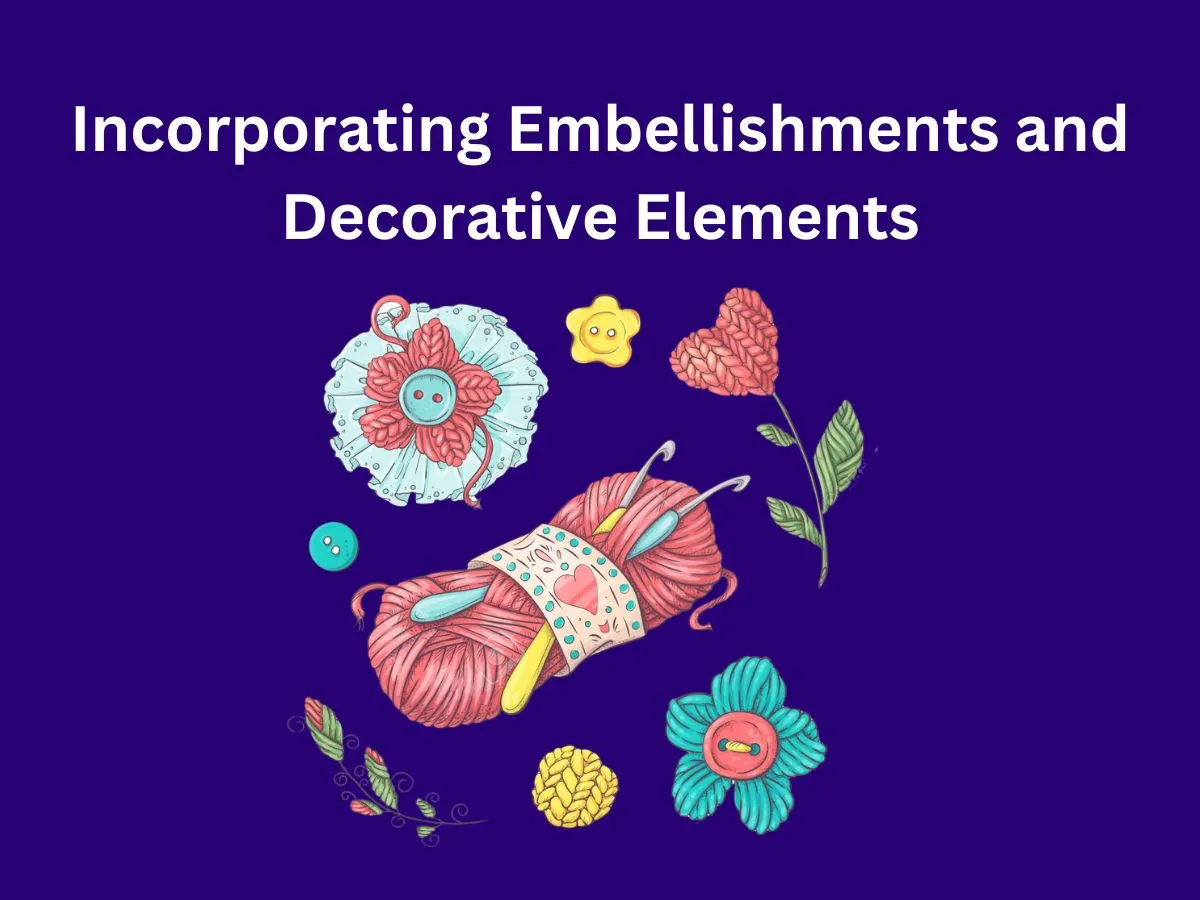
Adding embellishments to your crochet projects can take them from simple to stunning. One easy way to start is by creating small, crocheted shapes that can be used as appliqués. These can be attached to larger projects to create brooches, hair decorations, or even jewelry. For a more polished look, you can use a felt backing to group multiple small pieces together before attaching them to your main project.
Surface embellishments are another great way to add interest to your work. Crochet dots, for example, can be added by working multiple yarn overs into a single stitch on the surface of your project. This creates a raised, textured effect that can be used to create patterns or highlight specific areas of your work. Outlining and defining motifs with contrasting yarn is another simple yet effective way to make your designs pop.
When adding embellishments, it’s important to consider both the front and back of your work. If you’re creating something that will be seen from both sides, like a hair clip, you might want to take extra care to make the back neat and tidy. Remember, embellishments don’t have to be complicated to be effective. Even simple additions like changing yarn colors or adding a pom-pom can significantly enhance your project’s overall look and appeal.
Resources for Continuous Learning and Inspiration
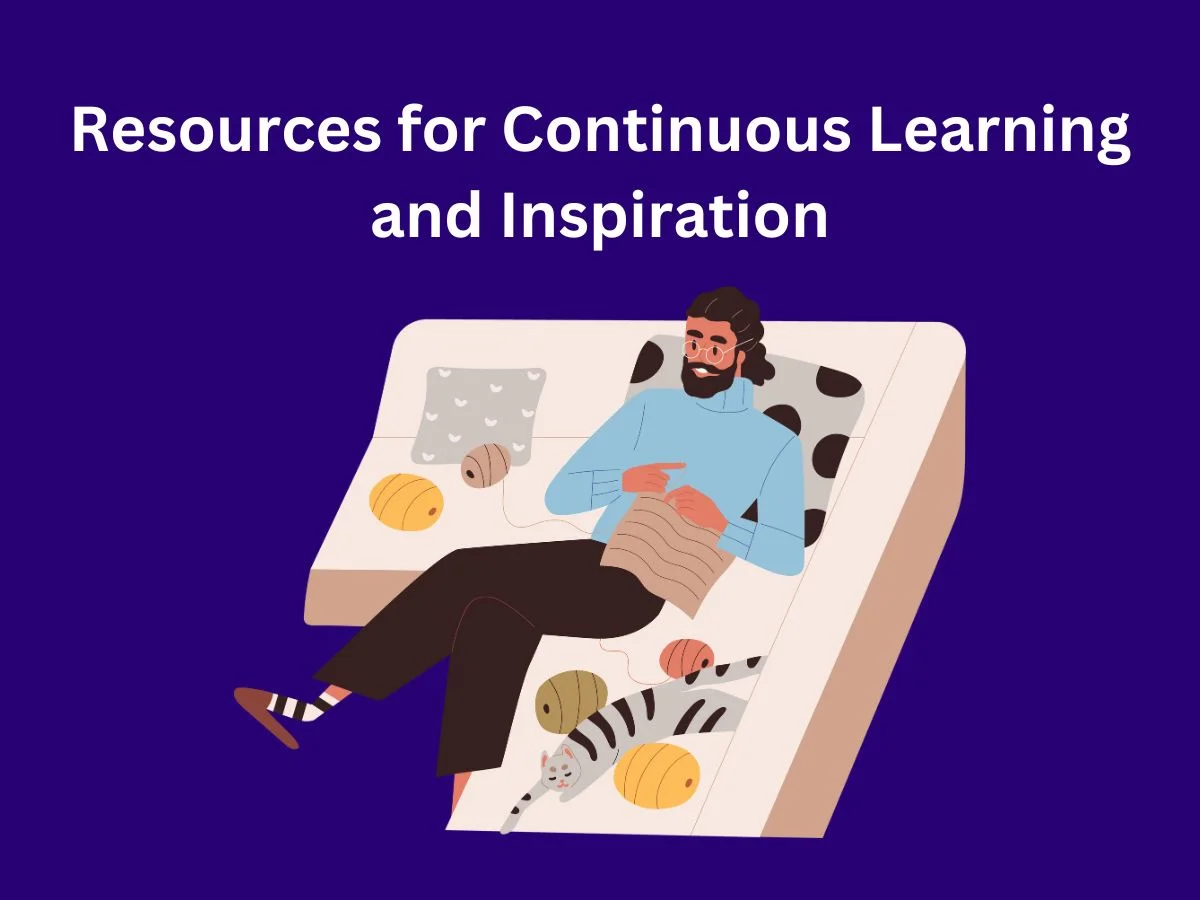
There are many great resources available for crocheters looking to expand their skills and find inspiration. Online platforms like Ravelry are excellent starting points, offering over 300,000 free crochet patterns and a community of fellow crafters to connect with. AllFreeCrochet is another valuable site, particularly for those interested in traditional stitches and patterns, with over 100,000 free patterns available.
Social media platforms can also be great sources of inspiration. TikTok and YouTube have countless crochet videos covering a wide range of techniques and projects. These visual tutorials can be especially helpful when learning new stitches or complex shaping methods. Twitter (now X) is another platform where you can join crochet-related conversations and discover new ideas.
For those interested in specific areas like amigurumi design, there are specialized courses available online. Pattern books are another excellent resource, offering collections of designs focused on particular types of projects. Some popular options include “Crochet Cute Critters” by Sarah Zimmerman and “Edward’s Menagerie” by Kerry Lord. Remember, your local library can be a great place to find crochet books without having to purchase them. With these resources at your fingertips, you’ll never run out of new techniques to learn or projects to try.
Final Thoughts
Now, armed with these expert tips, you’re on your path to becoming a crochet master! Be sure to use these skills to make the things you’ve always dreamt of. Note, that you can create beautiful pieces to express your creativity.
Don’t be scared to push yourself, experiment with different stitches, and enjoy the journey of learning. If you still require further assistance or have any questions, feel free to contact me at info@madeehamedia.com. Happy crocheting, and may you create awesome crochet pieces!
Frequently Asked Questions
Q1: What are the different crochet skill levels?
A: Beginner, Easy, Intermediate, and Experienced, based on stitches and techniques.
Q2: What are some essential advanced stitches to learn?
A: Granite stitch, bobble stitch, shell stitch, alpine stitch, and more.
Q3: How can I tackle complex crochet patterns?
A: Break them into smaller parts, practice new techniques, and use stitch markers.
Q4: How can I improve my crochet tension?
A: Practice regularly, experiment with yarn holds, and maintain a relaxed grip.
Q5: What are some specialty crochet styles to explore?
A: Crochet braids, amigurumi, and Tunisian crochet are a few to consider.
Q6: What is mosaic crochet?
A: A color work technique using only chains, single crochets, and double crochets.
Q7: How can I add embellishments to my crochet projects?
A: Create appliqués, add surface embellishments like crochet dots, or outline motifs.
Q8: What are some advanced shaping methods?
A: Strategic increases and decreases, and using stitches of different heights.
Q9: Where can I find inspiration for crochet projects?
A: Ravelry, Pinterest, YouTube, and crochet blogs are great resources.
Q10: How can I avoid getting stuck when learning advanced techniques?
A: Be patient with your progress, start with smaller projects, and seek advice from online communities.